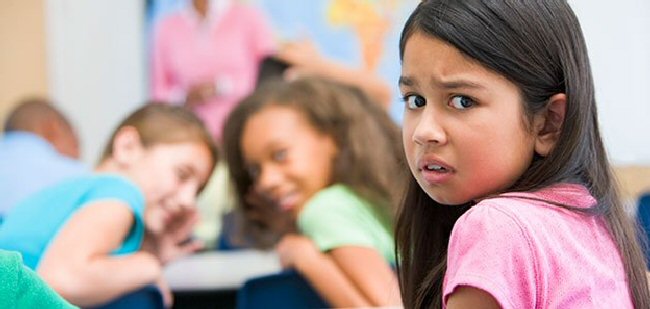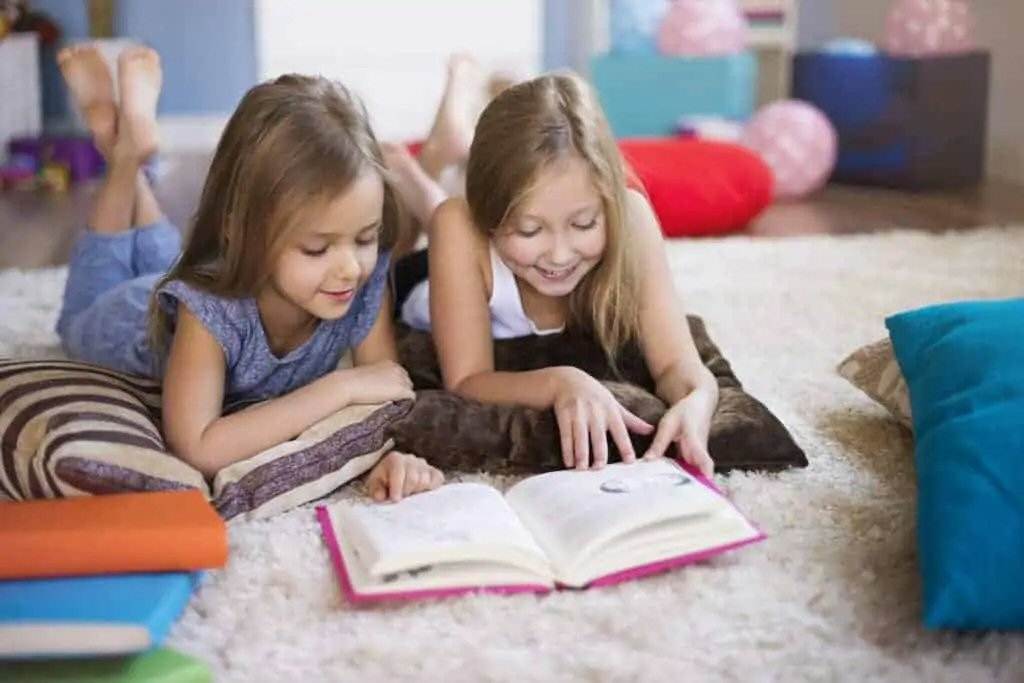“But You’re My Friend……”: How to Spot and Deal With a Bullying Friend.
Monday November 8, 2021
Friendships are a huge part of our lives; they bring us so much joy, comfort, motivation, and hope. But our friends can also hurt us and make us feel sad – friends can even be bullies. What exactly is “Friendship Bullying”? How do you identify it, stop it, and heal from the pain? Morgan Livingstone CCLS has written this blog for our young friends who may be experiencing bullying behavior from a friend or group of friends.
When Friends Become Bullies
Bullying may seem straightforward, but it is actually pretty complicated. Especially when the person bullying you is your friend. Being bullied by someone you consider a friend can be really subtle, making it harder to notice, and this can take a while to get your attention. After all, they are your friend, so you may not even realize that what is happening is actually bullying.
When your bully is your friend, you may not “want” to stop the friendship, just the not-so-nice bullying part of it, since this person is your friend and you like to hang out together when there’s no bullying happening. Clearly, this is complicated. The good news about this bad situation is……it’s happened to a lot of people, and there is something you can do about it.
“Stop Picking On Me” By Pat Thomas is a story book that gives us a first look at Bullying.
What Is Friendship Bullying?
Now that we know more about bullying in general, let’s take a closer look at what friendship bullying actually is.
Friendship bullying is just that, a friend who bullies another friend. Sometimes adults call this “relational bullying” since it is happening within a relationship between two people. No matter what you call it, this is bullying. This type of bullying can happen to anyone, at any age – from very young kids just starting school, to teenagers and even adults. That’s right – even adults can experience bullying from a friend.
Friendship bullying has many similarities with regular bullying, but because it happens within a friendship group, or between friends, the person being bullied may think it’s a normal part of having friends.
It can be hard for someone to know if it’s just playful back-and-forth talk or bullying, especially if the friend is saying, “It was just a joke”, or “Can’t you take it?”.
Friendship bullying includes:
- Verbal abuse, such as name-calling and gossiping
- Threatening, intimidating or humiliating behaviour (for example, “If you tell on us, we’ll tell everyone you’re a baby who’s afraid of the dark”)
- Excluding someone from the friendship group; leaving them out of plans; whispering behind their back
- Undermining someone, by spreading rumours or constantly criticizing them (‘I don’t know why we let you hang around with us; we’re so much prettier than you/better at sports than you’)
- Controlling or manipulating (‘If you don’t let me copy your maths homework, I won’t be your friend any more’)
- Making silent, abusive or prank calls
- Bullying via text, social media, online gaming or other digital communication tools (this is called cyberbullying).
Check out this great video explaining one person’s experience when their friend was their bully, and the years they lived with this bullying before making the decision to leave that friendship.
A Controlling Friend is Actually a Bully
One of the most difficult types of friendship bullying can actually seem the least like bullying – a controlling friend. A controlling friend wants to trick you into believing that they are your friend and they care about your friendship. But in reality, the friendship is based on their desire to control you – not on the mutual respect of a true friendship. Once you recognize the signs of a controlling friend, you can do something about it – but how do you know? Here are 6 signs of a controlling friend:
- Being demanding – when a friend controls what you do all the time, what you wear, even who you hang out and play with
- Lacking respect for you – when a friend makes fun of you and calls you mean or hurtful names.
- Acting superior and entitled – when a friend expects special treatment, or acts as if they are smarter than you and thinks they are always right.
- Creating drama – when a friend always argues with you, or chooses the opposite position from you all the time.
- Being manipulative – when a friend takes advantage of your generosity, or makes you feel bad or guilty in order to get what they want.
- Isolating you – when a friend won’t let you see or talk to other friends, or even tries to stop you from spending time with your family.
Here is a link to a full article on these 6 characteristics of controlling friends that can help you determine if this is happening to you, and what to do if it is!
What To Do If Your Friend Is Also Your Bully
So now what do you do if you realize your friend is bullying you? Our friends at Ditch the Label have some great strategies to do if this is happening to you.
Don’t laugh it off
Nobody wants to be that friend who can’t take a joke. So part of the problem is we laugh along with them when a joke is made at our expense, as a way of diffusing the awkwardness and tension. But the major downside is your laughter will give the impression that you’re cool with the mean jokes. You are 100% allowed to not find something funny, and tell your friend so. The reason it feels hard is we can’t control other people’s reactions, so the fear lies behind not knowing how they will react.
We need to talk
Try being honest with your friend, and let them know how they have made you feel. Make sure you have the conversation somewhere private where you won’t be interrupted. The best advice is to be direct, keep it short and stick with how it makes you feel instead of blaming them. If they are genuinely apologetic, they will make an effort to tone it down. If not, it is likely they will get defensive and deny doing anything to hurt your feelings. Whatever the outcome, what matters is you have said something and taken action.
Try these scripts to help you get your words organized – and practice to get comfortable with the words in your mouth:
“I feel hurt / uncomfortable when you call me names, and I don’t want you to do that anymore.”
“I don’t like it when you won’t let me hang out with other kids/friends. Please stop preventing me from seeing other people.”
Stand up for yourself
Easier said than done when it comes to our friends being the ones who are giving us a hard time. But the bottom line is this will not be the last time you have to stand up for yourself, so you might as well start getting good at it now. One important skill is learning how to speak up when it matters.
Know when to walk away
This is rarely an easy call to make, especially with old friends, or if this is your only friend. Think twice about holding onto friendships where you feel criticized, ignored, gossiped about, judged, manipulated, made fun of or left out.
It’s not me, it’s you
It can be a scary prospect standing up for yourself, or walking away from somebody who you considered a friend. But your feelings are much more important than trying to keep somebody happy who doesn’t care about you.
Don’t ignore your feelings
Don’t ignore your feelings when someone makes you feel bad about yourself. Do you have any friends who, after spending time together, cause you to feel worse than you did before? Do you feel nervous around them because you don’t know what they are going to say or do? Bullying affects our overall happiness and confidence. We must check in with ourselves and not ignore our feelings. The worse the bullying gets – the worse we begin to feel. A friend should make you feel happy, liked, appreciated and confident.
Moving On: Helping and Healing
Hopefully you have found some helpful strategies to manage whatever friendship bullying you may have been experiencing. You can be a helper for others by spreading the word about this, being a good role model and choosing NOT to participate in any type of negative, hurtful bullying behaviors against anyone.
It is important to know that bullying happens all around the world, and to people of all different ages. Even your favorite singer, celebrity or YouTuber may have experienced bullying – and that’s just not right! Talking about bullying behavior at school, with your friends and family, and learning about how to prevent or stop it all helps us build a better world.
Listen to YouTuber and animated cartoon artist Alex Clark share his own bullying experiences, and how he feels about bullying behavior impacting his dream of becoming an amazing animator and illustrator. Alex has a sense of humor about his experiences, but also shares how hard he worked to overcome the bullying, including some inspired advice to rise up, work harder and not let the haters get to him.
Music by famous artists includes a number of great songs about bullying, exploring all the feelings they had after bullying. Many look at bullying experiences from different perspectives – even the regretful adult bully looking back on what they did to someone.
Writing (stories, poems, and lyrics), singing, dancing and creating can be a great way to get all your feelings out about what you have experienced. You never know, your words, songs, drawings, or paintings might help inspire someone else to move forward after a friend bullies them.
This cool playlist of 35 songs focuses on rising up against bullying.
Discover how you can create your own personal story book about your positive attributes, abilities and achievements, and all the wonderful things that make you uniquely YOU!
More Bullying Articles from WE C Hope
Bullying After Retinoblastoma: How to Help Kids Respond With Confidence
Children diagnosed with retinoblastoma are especially vulnerable and sensitive to bullying due to treatment effects. Morgan Livingstone CCLS discusses what bullying is and isn’t, how parents can recognize the signs, and help young Rb survivors use stories and develop skills to stand up to bullies with confidence.
Cyberbullying: What Is It? How Can We Handle It and Reduce the Risk?
Cyberbullying is becoming increasingly common, as we spend more time online, beginning at younger ages. Child Life intern, Shane Smith, explores the defining features of cyberbullies, what we can do to limit the risk of unwanted attention and protect our security online, and how we can handle cyberbullying and support affected children.
About the Author
 Morgan Livingstone is a Certified Child Life Specialist and Certified Infant Massage Instructor/Trainer. She is passionate about improved child life and psychosocial supports for children and families affected by retinoblastoma.
Morgan Livingstone is a Certified Child Life Specialist and Certified Infant Massage Instructor/Trainer. She is passionate about improved child life and psychosocial supports for children and families affected by retinoblastoma.
As the Child Life Officer of World Eye Cancer Hope, Morgan contributes to the website’s Child Life sections, and speaks globally about child life supports for children with retinoblastoma. Morgan provided enriched multi-day child life programming for children of all ages at both One Rb World in Washington, D.C. in October 2017 and the Canadian Retinoblastoma Research Advisory Board meeting in December 2017.
Morgan also writes and creates resources for children and adults, and participates in child life research studies. She won the inaugural Innovation Grant at Operation Smile for developing an APP that uses Virtual Reality to prepare children receiving cleft lip and palate surgery for their operation.
Download Morgan’s helpful parent manual for supporting children’s worries using Worry Eaters.






Share this entry